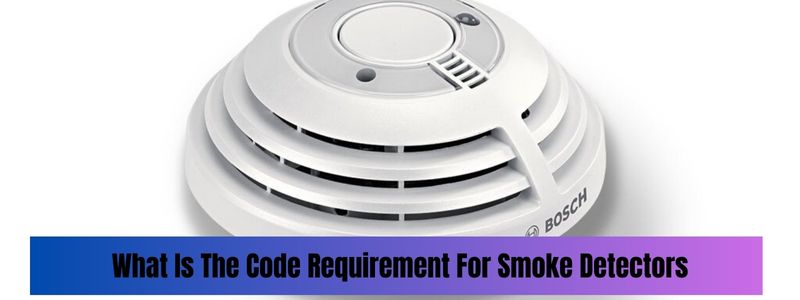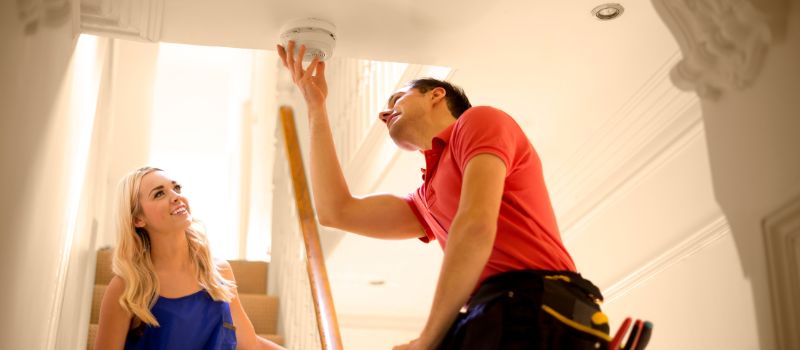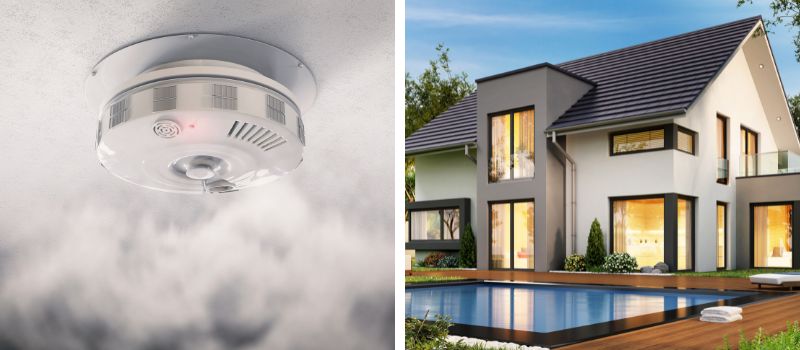When it comes to fire safety, early detection is crucial. Heat detectors play a vital role in identifying and alerting occupants to potential fire hazards. The National Fire Protection Association (NFPA) sets standards and guidelines to ensure the effectiveness of heat detectors in detecting fires promptly.
In this article, we will explore the coverage area requirements for heat detectors as specified by NFPA, highlighting the importance of adherence to these guidelines for enhanced safety.
What is the coverage area of heat detector as per NFPA?
The National Fire Alarm Code (NFPA 72) says that heat detectors should be placed every 50 square feet or 2500 square feet on smooth ceilings.
Understanding NFPA Guidelines:
NFPA, a leading authority on fire safety, provides comprehensive guidelines that help define the parameters for fire detection devices. These guidelines are continuously updated to incorporate the latest advancements in technology and best practices in the field. When it comes to heat detectors, NFPA offers specific recommendations regarding their coverage area, ensuring optimal fire detection capabilities.
The Coverage Area of Heat Detectors:
Heat detectors are designed to detect a rapid increase in temperature, typically caused by a fire. The coverage area of a heat detector refers to the space within which it can effectively sense and detect heat anomalies. NFPA has established specific requirements to determine the appropriate coverage area for heat detectors, taking into account various factors such as room size, ceiling height, and ambient conditions.
NFPA 72: National Fire Alarm and Signaling Code:
NFPA 72 is the widely recognized standard for fire alarm and signaling systems, including heat detectors. This code provides detailed instructions and requirements for the installation, testing, and maintenance of fire alarm systems. According to NFPA 72, the coverage area of heat detectors should be based on the anticipated response time required for detecting a fire and initiating the appropriate response.
Factors Influencing Coverage Area:
Several factors influence the determination of the coverage area for heat detectors. These factors include:
- Room Size: The size of the area to be covered plays a crucial role in determining the number and placement of heat detectors. Larger rooms may require multiple detectors strategically positioned to ensure comprehensive coverage.
- Ceiling Height: The height of the ceiling affects the coverage area as heat rises. Higher ceilings may require additional detectors or specific placement to ensure effective heat detection.
- Ambient Conditions: The ambient conditions within a space, such as airflow patterns and temperature differentials, can impact the coverage area of heat detectors. It is essential to consider these factors to avoid false alarms or missed detections.
NFPA Guidelines for Heat Detector Coverage Area:
NFPA 72 provides general recommendations for heat detector coverage areas. However, it is essential to consult the specific requirements outlined in the code for detailed guidance. The guidelines take into account the anticipated response time required for occupants to evacuate safely and for the fire protection system to activate appropriate measures.
Consulting Fire Safety Professionals:
Determining the ideal coverage area for heat detectors can be a complex task. It is advisable to consult fire safety professionals who possess expertise in adhering to NFPA guidelines. These professionals can assess the unique characteristics of your building and recommend the appropriate number and placement of heat detectors for maximum coverage and effectiveness.
Conclusion:
Ensuring effective fire detection is essential for safeguarding lives and property. Heat detectors, as defined by NFPA guidelines, provide an important layer of protection by detecting heat anomalies indicative of fire. Adhering to the coverage area requirements outlined by NFPA ensures optimal fire detection capabilities, reducing response times and promoting safety.
By consulting fire safety professionals and following established guidelines, building owners and occupants can enjoy peace of mind knowing that their fire detection systems are designed to meet the highest standards of reliability and effectiveness.
Read more:
- How Do You Calculate Heat Detector Spacing?
- What Is The Maximum Distance Between Heat Detectors?
- Can You Mount A Heat Detector On A Wall?
- What Are The Two Types Of Heat Detectors?
- Is Heat Detector Required In Garage?

Edward’s expertise in smoke detectors is particularly noteworthy. He has conducted extensive research on the latest advancements in smoke detector technology and has worked closely with manufacturers to develop cutting-edge products that can detect fires more accurately and quickly.




